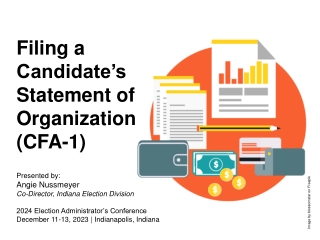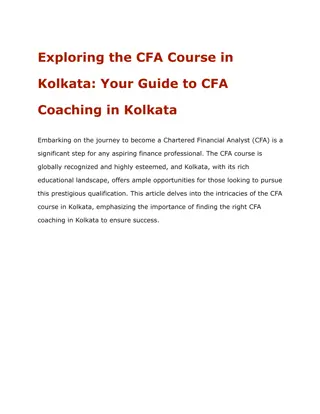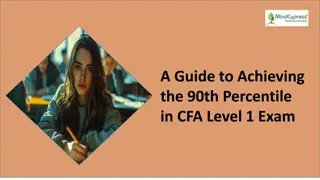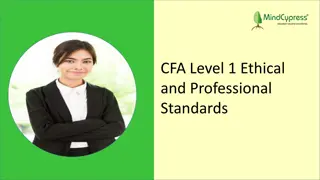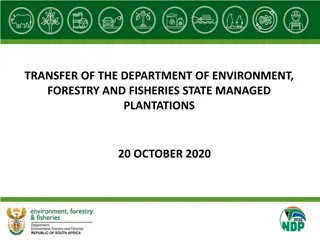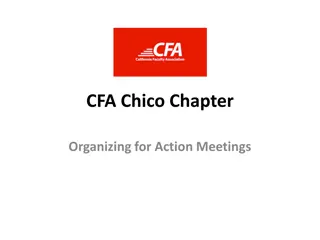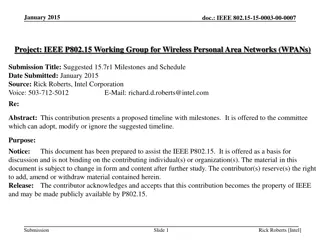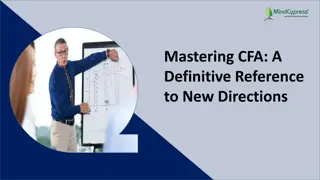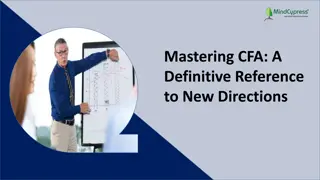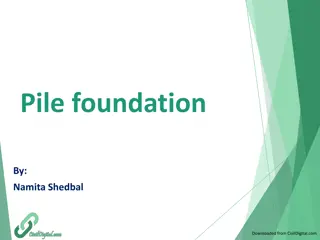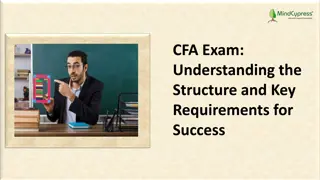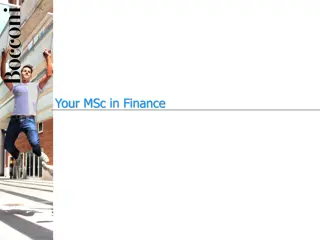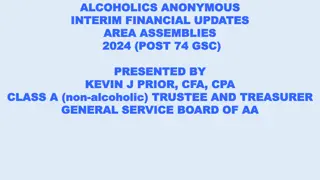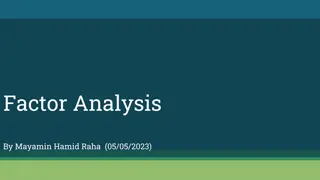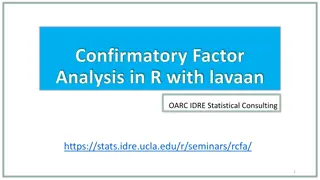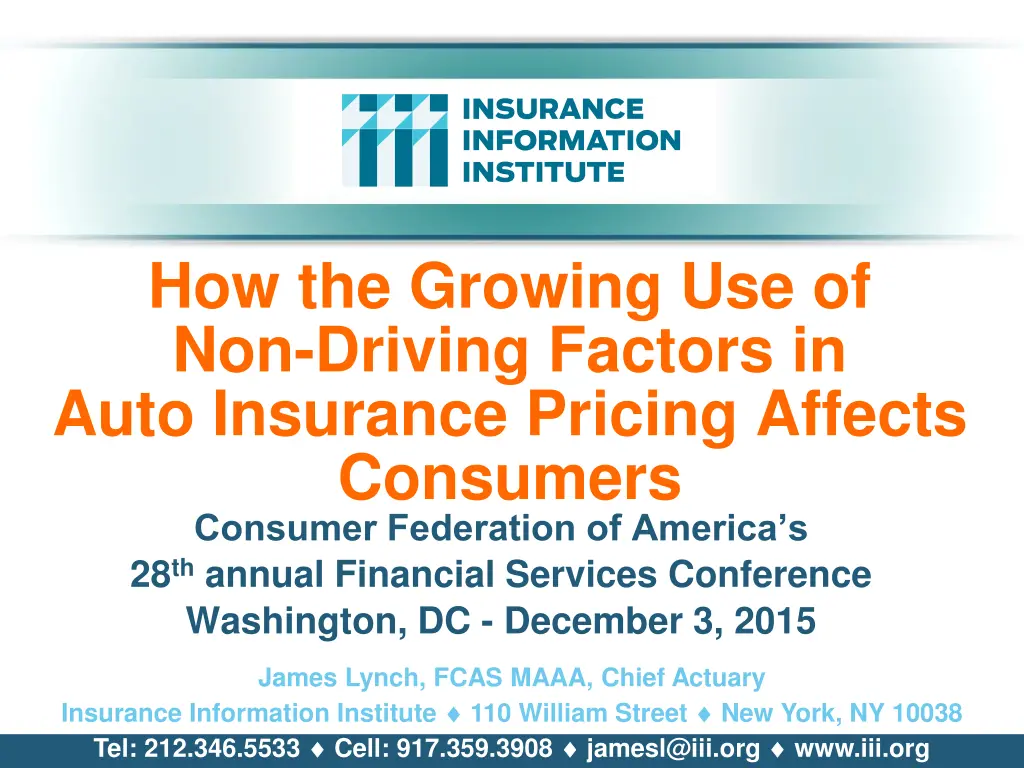
Impact of Non-Driving Factors on Auto Insurance Pricing
Discover how the increasing use of non-driving factors in auto insurance pricing affects consumers, as discussed at the Consumer Federation of America's 28th Annual Financial Services Conference. Key points include the prevalence of non-driving factors, the impact of insurance scores, and how they influence rates for different drivers.
Uploaded on | 1 Views
Download Presentation

Please find below an Image/Link to download the presentation.
The content on the website is provided AS IS for your information and personal use only. It may not be sold, licensed, or shared on other websites without obtaining consent from the author. If you encounter any issues during the download, it is possible that the publisher has removed the file from their server.
You are allowed to download the files provided on this website for personal or commercial use, subject to the condition that they are used lawfully. All files are the property of their respective owners.
The content on the website is provided AS IS for your information and personal use only. It may not be sold, licensed, or shared on other websites without obtaining consent from the author.
E N D
Presentation Transcript
How the Growing Use of Non-Driving Factors in Auto Insurance Pricing Affects Consumers Consumer Federation of America s 28thannual Financial Services Conference Washington, DC - December 3, 2015 James Lynch, FCAS MAAA, Chief Actuary Insurance Information Institute 110 William Street New York, NY 10038 Tel: 212.346.5533 Cell: 917.359.3908 jamesl@iii.org www.iii.org
Three Facts About Non-Driving Factors 2 2
1. Most Factors Are Non-Driving Factors Age Crashes per 100,000 Drivers, By Age 30,000 Gender 25,000 Territory/State 20,000 15,000 Crashes per 100,000 Drivers, By Gender 10,000 6,000 5,000 5,000 4,000 - 3,000 2,000 1,000 SOURCES: U.S. Department of Transportation, National Highway Traffic Safety Administration, Federal Highway Administration. - Male Female 3
No. 2: Most Drivers Have Clean Driving Records In One Year. . . In Three Years. . . In Accident 5.7% Ticketed 5.3% Ticket or Accident or Both 29.5% Clean Record 70.5% Clean Record 89.0% Three-year calculation makes conservative assumption that no ticketed driver in a year is in an accident that year. SOURCES: Insurance Information Institute calculation using data for 2012 from ISO, a Verisk Analytics company, and Langton and Durose, Police Behavior During Traffic and Street Stops, 2011, Department of Justice, p. 7. 4
No. 3: Insurance Scores Are Effective Confirming Studies Include Paid Loss by Insurance Score, Collision Coverage 2.00 NAIC (1996) 1.93 1.80 Paid Loss Relative to Highest Decile Virginia (1999) 1.60 1.59 1.40 1.48 Michigan (2002) 1.36 1.20 1.25 1.25 Texas (2003) 1.15 1.12 1.00 1.08 1.00 0.80 Texas (2004) 0.60 FTC (2007) 0.40 New Jersey (2008) 0.20 - Georgetown U (2015) 1 2 3 4 5 6 7 8 9 10 Relativity Controlled for Ethnicity, Neighborhood Income. SOURCE: Federal Trade Commission, Credit-Based Insurance Scores: Impacts on Consumers of Automobile Insurance, July 2007, Table 6. 5
No. 4: Insurance Scores Lower Rates for Most Drivers Safer Drivers Save Average Quotes: Florida $4,500 Drivers Most Likely to Be in Accident Pay More. Straight Average: Two- thirds Save $754 (33%) $4,000 $3,826 $3,500 Weighted Average: 95% Save $106 (5%) $3,000 Str Avg, $2,319 $2,500 Impact of Credit Scores on Consumers Wtd Avg, $1,811 $2,000 Increase 14.8% $1,500 $1,721 $1,409 $1,000 No Change 45.9% $500 Decrease 39.3% $- Excellent Score Good Score Poor Score SOURCE: Arkansas State Insurance Department, Use and Impact of Credit in Personal Lines Insurance Premiums Pursuant to Ark. Code Ann. 23-67-415, 2015, p. 4. SOURCE: Insurance Information Institute calculation based on Consumer Reports data. 6
Three Facts About Price Optimization 7 7
1. Insurers Have Always Optimized With Regulator Knowledge & Approval Companies Temper Increases Based on Market Judgment Regulators Are Generally OK With That. Sources: System for Electronic Rate and Form Filing (SERFF) via SNL Financial; Insurance Information Institute. Other Examples: Rate Capping, Teen Drivers 8
2. Optimization Is Not Price Gouging Traditional Practice An Example Actuarial Indication Used Seat-of-the- Pants Judgment to Discount Off Indication $106 $105 $104 Indicated: +6% What s New $103 Software Informs the Judgment $102 Selected: +3% $101 Never Exceeds Actuarial Indication Today's Rate $100 $98 $100 $102 $104 $106 9
3. Optimization Doesnt Raise Rates; It Distributes the Rate Change As Practiced in U.S. Example (cont d): There Are Many Reasonable Ways to Achieve Reasonable Rates. Remains True to Cost- Based Price 10% 9% 9% 8% 8% 8% Applied to Classes, Not Individuals 7% Indication 6% 6% Doesn t 6% 5% 5% By Class 4% Innovations Are Usually Encouraged, With Appropriate Restraint Exceed 4% 3% 3% 3% 3% 2% 2% 2% 1% 1% 0% 0% 0% Overall Class 1 Class 2 Class 3 Class 4 Indication Judgment Optimized 10
Insurance Information Institute Online: www.iii.org Thank you for your time and your attention! Twitter: twitter.com/III_Research 11

